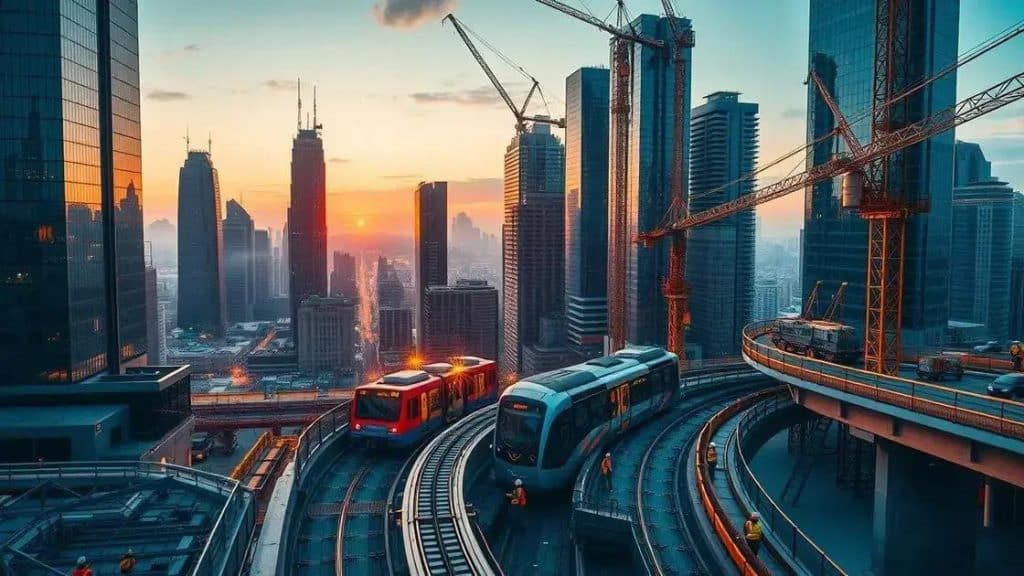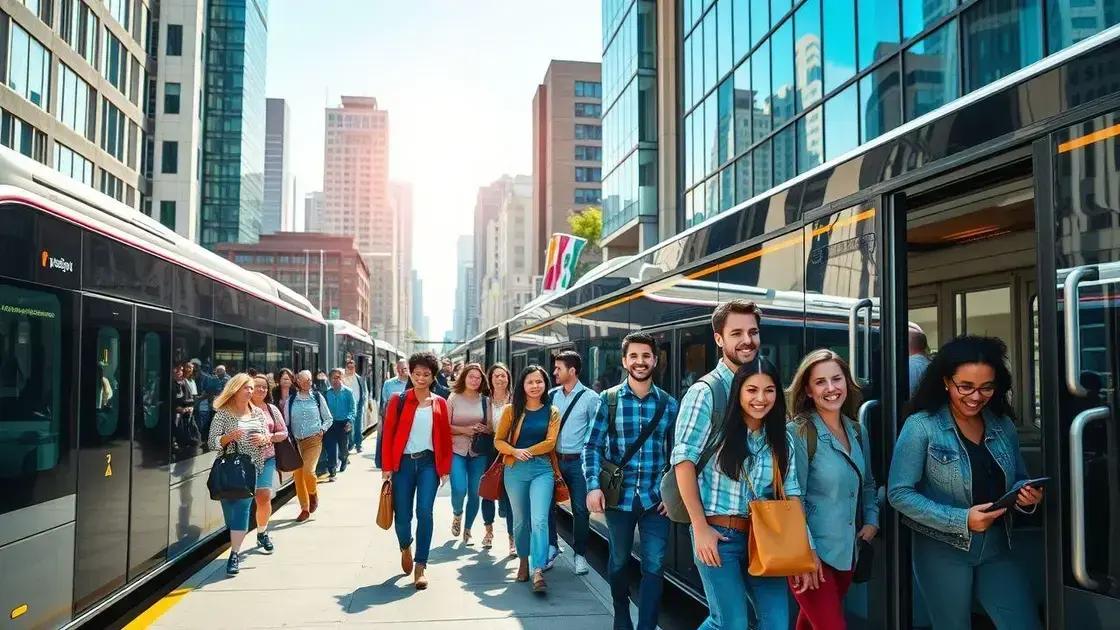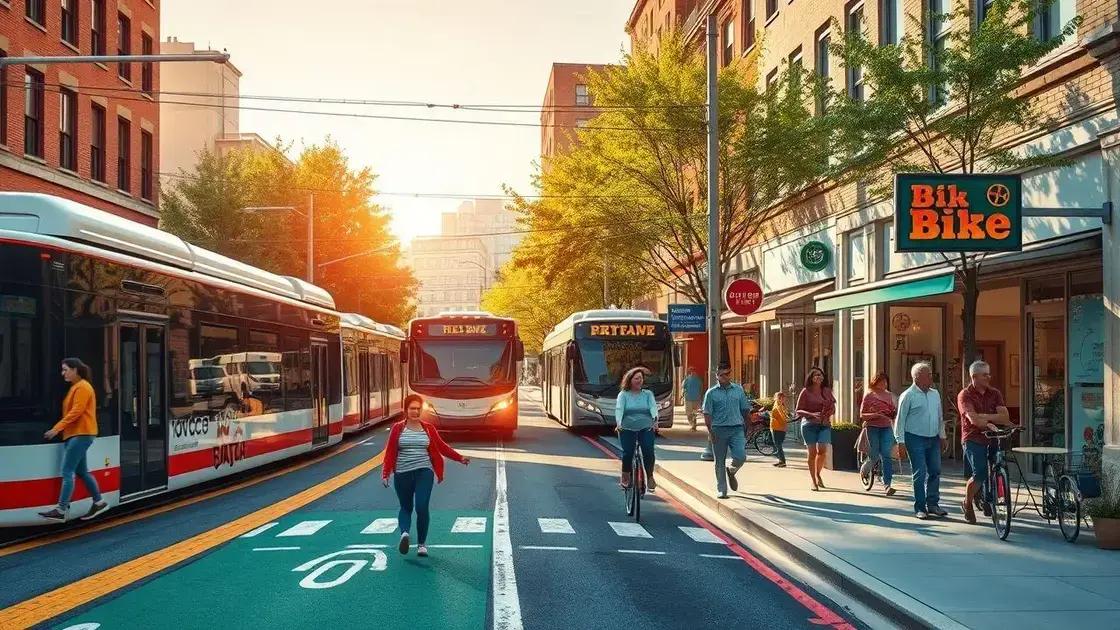New transportation infrastructure projects approved: what you need to know

New transportation infrastructure projects approved enhance community accessibility, stimulate local economies, and promote healthier lifestyles by improving transit options and reducing congestion.
New transportation infrastructure projects approved promise to reshape our cities and enhance connectivity. Have you ever wondered how these developments might affect your daily travel? Let’s dive into what’s on the horizon.
Understanding the new transportation projects
Understanding the new transportation projects can be essential for grasping how our daily commutes will change. These developments promise to improve connectivity and efficiency for everyone.
Key Features of Transportation Projects
These projects aim to address various needs, from reducing traffic congestion to enhancing public transport services. They often include modernized roadways, bridges, and public transit systems.
Impacts on Daily Commuters
With new infrastructure, commuters will likely experience faster travel times and more reliable services. Here are some noteworthy impacts:
- Improved public transit options, making it easier to get around.
- Safer roads with better designed bike lanes.
- Reduced carbon emissions due to updated transportation systems.
- Creation of jobs due to construction efforts and maintenance.
Furthermore, these transportation projects can also foster economic growth by attracting businesses to improved areas. As cities evolve, the planning process typically involves community feedback to ensure the developments meet public needs. Engaging residents in this process ensures that these transportation infrastructures serve everyone effectively.
In recent years, the push for eco-friendly solutions has influenced the types of projects being approved. Public transportation options are increasingly powered by renewable energy sources, aligning with global sustainability goals. With this focus, many cities are investing in electric bus fleets and support for bike-sharing programs.
Key benefits for commuters and businesses

The key benefits of new transportation infrastructure projects significantly impact both commuters and businesses. These benefits promote efficiency and connectivity across communities.
Enhanced Travel Experience
For commuters, the improved infrastructure translates into shorter travel times. This means less time spent stuck in traffic and more time for personal and professional activities.
Economic Growth Opportunities
Businesses also stand to gain from these projects. As transportation systems improve, they can attract customers more effectively. Here are some specific advantages for businesses:
- Greater access to customers and suppliers.
- Increased sales due to better foot traffic.
- Reduction in transportation costs for deliveries.
- Potential for job creation in expanding areas.
These benefits enhance the overall quality of life in communities. When transportation systems facilitate smooth movement, people are more inclined to visit local shops and restaurants. This, in turn, helps local economies thrive.
Moreover, with enhanced public transportation options, employees can commute more easily. This promotes greater job satisfaction and can lead to lower employee turnover rates. Businesses that support employee mobility often see significant improvements in productivity as well.
Future trends in transportation infrastructure
The future trends in transportation infrastructure are shaping how we will move around urban areas. With technology and sustainability driving these changes, communities will see significant advancements.
Emphasis on Sustainability
One major trend is the focus on sustainability. Cities are increasingly investing in eco-friendly transportation options. This includes electric buses and solar-powered light rail systems. Adopting greener technologies aims to reduce carbon emissions and promote healthier environments.
Smart Transportation Systems
Another exciting development is the rise of smart transportation systems. These systems use data and technology to enhance mobility. Some features of smart transportation include:
- Real-time traffic updates to help drivers choose better routes.
- Smart traffic signals that adjust to flow and reduce congestion.
- Integrated apps that connect multiple types of transit for seamless travel.
As technology evolves, the integration of mobile applications will become even more vital. Users will benefit from comprehensive services, allowing them to plan trips more efficiently. This can lead to increased usage of public transportation and less congestion on roads.
Furthermore, the focus on multimodal transportation will continue to grow. This approach encourages the combination of various transportation methods, such as biking, walking, and public transit. It makes moving around cities more accessible and user-friendly for everyone.
How local communities are affected

When new transportation infrastructure projects are approved, local communities experience various impacts that shape their daily lives. These effects can be both positive and negative, influencing how residents interact with their surroundings.
Improved Accessibility
One major benefit is increased accessibility. New roads, transit systems, and bike lanes make it easier for people to get from one place to another. This can lead to more active lifestyles as residents feel encouraged to walk or bike instead of relying solely on cars.
Economic Development
Furthermore, improved transportation often stimulates local economies. Businesses thrive in areas with better access, and residents may discover new job opportunities. Here are some key ways communities benefit economically:
- Increased foot traffic at local shops and restaurants.
- Attraction of businesses drawn to the new infrastructure.
- Rise in property values due to improved access.
- Job creation linked to construction and ongoing maintenance.
While there are benefits, challenges also arise from new transportation projects. Some communities face disruptions during construction, such as road closures and noise pollution. It’s important for city planners to communicate effectively with residents to minimize these disruptions.
The social fabric of communities can also change. Enhanced connectivity means residents can more easily access community events and services, fostering social engagement. However, it can also lead to issues like gentrification as neighborhoods become more attractive to newcomers.
FAQ – Frequently Asked Questions about Transportation Infrastructure Projects
How do new transportation projects improve community accessibility?
New transportation projects enhance accessibility by providing better roads, transit systems, and bike lanes, making it easier for residents to travel.
What are the economic benefits of transportation infrastructure improvements?
These improvements often lead to increased foot traffic for local businesses, job creation, and higher property values as areas become more attractive.
What health benefits come from updated transportation systems?
Updated transportation encourages more active lifestyles, promoting walking and biking, which can lead to improved overall health for residents.
How can local communities be involved in the planning of new transportation projects?
Local communities can participate by providing feedback during the planning process, ensuring that projects meet their needs and minimize disruptions.





